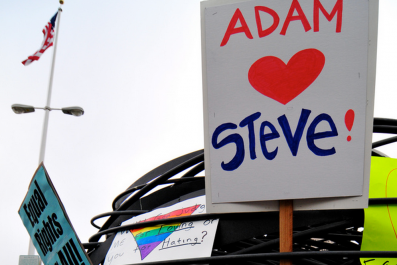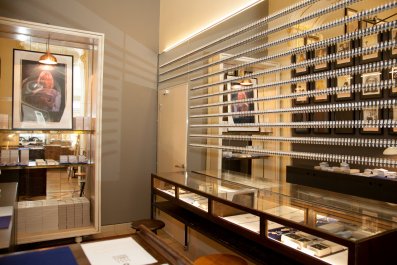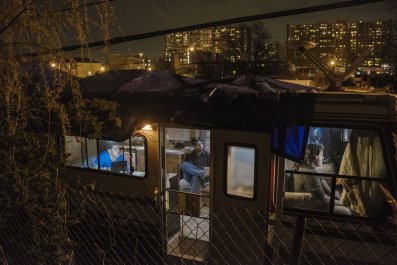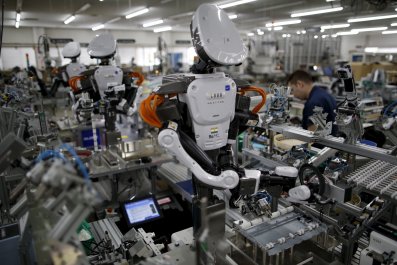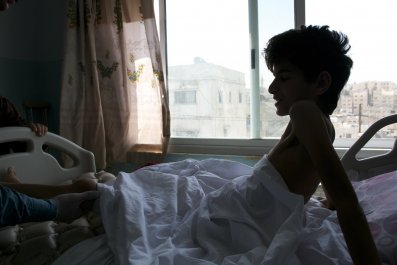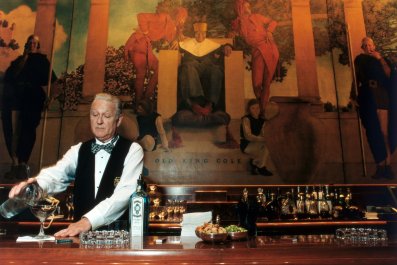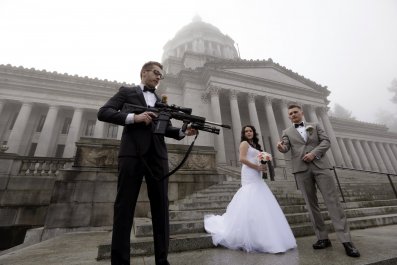Owensboro, Kentucky, on the banks of the Ohio River, is a town best known for its barbecue, bourbon and bluegrass—not to mention native son Johnny Depp. Every year, the town hosts a variety of food and music festivals. But in May 2009, a different sort of attraction arrived in Owensboro: The Obama administration quietly brought in a group of Iranian musicians to learn about American folk music.
It was a small diplomatic gesture, but one the White House hoped would help ease tensions between the U.S. and Iran, two longtime foes. It wasn't without risk. Hard-liners on both sides often view any dialogue with suspicion, and in the lead-up to the Iranians' visit to the town's International Bluegrass Music Museum, American security officials swore the staff to secrecy. If word leaked, some worried that protests might erupt in the U.S. or Iran.
On that festive afternoon in May, however, the only thing that erupted was applause, recalls Gabrielle Gray, the museum's executive director at the time. As a five-piece American bluegrass string band performed, some of the Iranians joined in. Sarah Ahmadi, a fully veiled singer, beat a large Persian tambourine, called a daf, occasionally throwing it in the air and ululating. One of the Iranian men picked up the tune on his three-stringed setar. Later, as the bluegrass band played another song, the two groups seamlessly alternated verses, the Americans singing in English, the Iranians in Persian. When the music stopped, the performers embraced. Some of them cried. "Music," Gray says, "is the sweetest diplomatic language."
Unlike the Nixon-era Ping-Pong diplomacy with China, cultural exchanges between Washington and Tehran have largely been kept out of the spotlight. But over the past 17 years, Iranian athletes, scientists and artists have quietly arrived in the U.S. for cultural programs funded by the State Department and organized by nongovernmental organizations. U.S. officials are still reluctant to talk about Washington's involvement, fearing diplomatic repercussions. But a leaked State Department document shows that last year 61 Iranians visited the United States on such excursions.
Small groups of Americans have traveled to Iran as well, sharing ideas and even collaborating in such fields as environmental protection, astronomy and health care. And now that the two sides have agreed to a historic deal to contain Iran's nuclear program, some say these cultural exchanges are helping pave the way for the next step toward easing more than three decades of mutual suspicion and hostility.
"These exchanges are just as powerful as any weapon system we sell to the Arab world, if not more," says retired Ambassador Richard LeBaron, now a senior fellow at the Atlantic Council, a Washington-based think tank. "As the [Iranian] conservatives argue against the [nuclear] accord, the buildup of civil society in Iran through exchanges creates a constituency that can push back against them."
The same may be true on the American side. "Most Americans know very little about Iran," says Barbara Slavin, an expert on Iran and the author of the book Bitter Friends, Bosom Enemies. "It's important for them to see that Iran is not all Revolutionary Guards and human rights abuses."
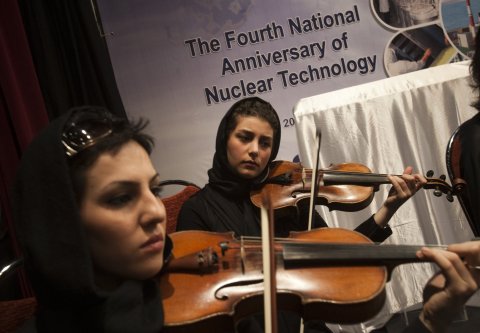
Before the 1979 revolution, Americans traveled to Iran frequently. They conducted business, built hospitals and trained the country's farmers, while some 50,000 Iranians studied at American universities. At the time, the two countries were allies, as Washington depended on Iran's American-trained military to keep the Soviets out of the region. But the U.S. severed its ties with Tehran in 1980 after radical students stormed the U.S. Embassy and held 52 American diplomats hostage. From then on, for most Americans, the country became synonymous with terrorism and Islamic extremism.
In 1996, a group of former officials from both countries gathered at a secluded lakefront resort in Sweden to find a way to mend the broken relationship. There were plenty of reasons for optimism. Bill Clinton was in the Oval Office, and his moderate counterpart in Iran, President Mohammad Khatami, also seemed open to a thaw. Despite two years of intermittent meetings, neither side could convince their governments that reconciliation was possible. But the two countries agreed that person-to-person exchanges could serve as a first step.
In February 1998, at Khatami's invitation, a team of American wrestlers arrived in Tehran to compete in an international tournament. The Americans marched into an Iranian sports arena holding an American flag—an object normally reserved for burning in the Islamic Republic. "That was quite a breakthrough," recalls John Marks, a former American diplomat and founder of Search for Common Ground, the nonprofit that helped arrange the event.
Since then, American and Iranian wrestlers have competed in both countries more than a dozen times, and similar exchanges have occurred between athletes and professionals in other fields. American and Iranian environmentalists now meet to discuss remedies for droughts and water shortages, while doctors, business leaders and clergymen attend each other's conferences. One of the most moving exchanges occurred in August 1999, when the astronaut Rusty Schweickart led a group of American astronomers to Isfahan, a city in central Iran, so they could study a solar eclipse. William Miller, a retired U.S. diplomat who accompanied the group, recalls how Bakhtiari tribesmen played music as the sky darkened and the birds stopped singing. When the sun emerged, Iranians and Americans rejoiced together, Miller says.
In 2005, after Iran elected President Mahmoud Ahmadinejad, tensions escalated, and it became harder for Americans to obtain travel visas to Iran. But Ahmadinejad didn't stand in the way of Iranians traveling to the U.S. for professional and academic conferences. In 2006, the National Academy of Sciences assumed a leading role in these visits, bringing over Iranian experts in such fields as archaeology and zoology. "Iranian scientists are considered very high quality," says Glenn Schweitzer, who directs the Academy of Sciences's Iran programs. "We saw Iran's isolation as an example of the global community being denied access to the talents of a country."
Those talents led Mississippi officials to adopt an Iranian system for providing health care to rural areas. The project grew out of a paper an Iranian doctor delivered at a medical conference in 2004 in Germany, outlining the success of Iran's 17,000 rural health clinics. An American medical consultant attending the conference realized the Iranian system might work in Mississippi. Soon Shiraz University in Iran and Jackson State University in Mississippi formed an academic partnership. Today, with a grant from UnitedHealthcare, the Americans are now hoping to build Iranian-style health houses across the Mississippi Delta. "The Iranians have stuff they can teach us," says Slavin, an Iran analyst at the Atlantic Council. "The idea of these exchanges is that they learn something, but we learn something too."
Now that the two sides have agreed to a nuclear deal, private organizations are lining up more exchanges between the two countries, says Jennifer Clinton, president of Global Ties U.S., a Washington-based nonprofit that helps administer international exchange programs. "We're already seeing an uptick," she tells Newsweek. Yet some experts say the growth of these cultural exchanges could remain limited. American lawmakers, they say, would need to permanently lift the sanctions that rule out any exchanges with military or economic applications—a prospect that seems far off.
Other experts aren't convinced the Obama administration fully appreciates the potential of person-to-person diplomacy to help the U.S. and Iran eventually restore full diplomatic relations. "The State Department can get out there and defend these exchanges and take them seriously as an instrument of national power and influence," says LeBaron, the former diplomat. "That's an approach we've never quite taken."
If the administration needs further convincing about the power of person-to-person exchanges, it might consider an email that the veiled Iranian singer sent to a member of the Owensboro bluegrass band a few months after her visit to Kentucky. "Dear friend," she wrote in English. "This is Sara Ahmadi, the player of an Iranian percussion daf who had a chance of being in the U.S. about two months ago. I hope you still remember me. I think when I was there, I had the best time of my life."



